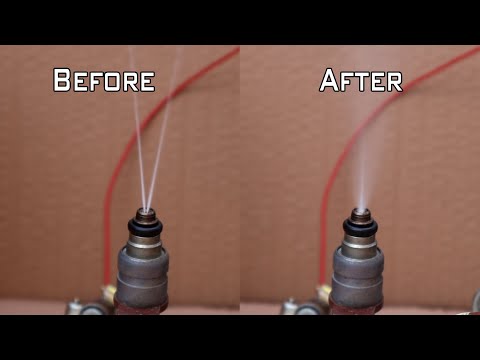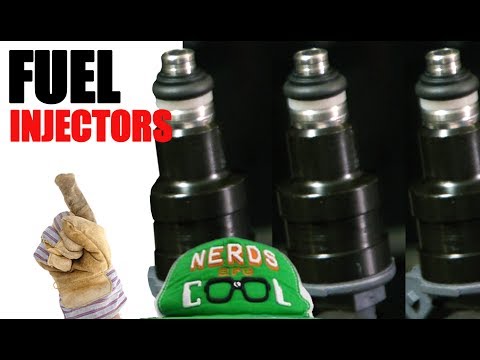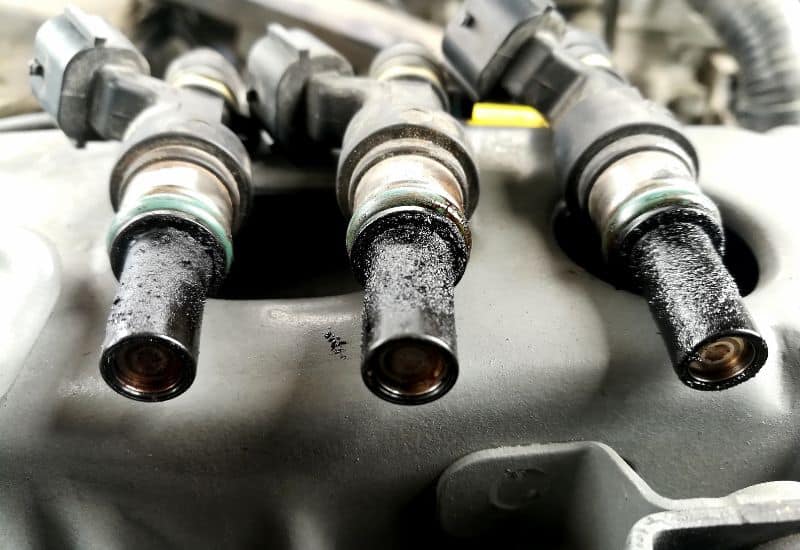
The fuel injection system is a critical component of modern internal combustion engines, as it is responsible for delivering the precise amount of fuel required for efficient combustion.
The fuel injector, which functions much like a syringe, sprays fuel into the intake manifold at a precise angle, igniting the chemical reaction in the combustion chamber that powers the engine.
Proper maintenance of the fuel injector is paramount in maintaining optimal engine performance, as clogged or fouled injectors can result in an imbalance in the fuel/air mixture, leading to a range of serious problems that can negatively impact engine performance.
While using a good fuel injector cleaner regularly can help prevent fuel injector problems, they can still become dirty, clogged, or fail entirely, leading to replacement.
Look out for common symptoms of bad fuel injectors like decreased performance, starting difficulties, increased fuel consumption, rough idling, engine knocking, and permanent combustion misfires. Neglecting dirty fuel injectors can result in unburned fuel entering the particle filter or catalytic converter, causing damage. In direct injection engines, a defective injection nozzle can even lead to piston seizure by washing off the oil film on the cylinder wall.
To dial in if the problem you’re having with your car is indeed clogged or bad fuel injectors, we’re going to have to pop the hood on some of the more common symptoms, the average cost to replace or clean them and and when it is worth changing the injectors.
How a Fuel Injector Works
Each fuel injector works by supplying the precise amount of fuel to match the air in the fuel/air mixture inside the combustion chamber. A small electromagnetic solenoid inside the fuel injector opens and closes according to the timing of the engine.
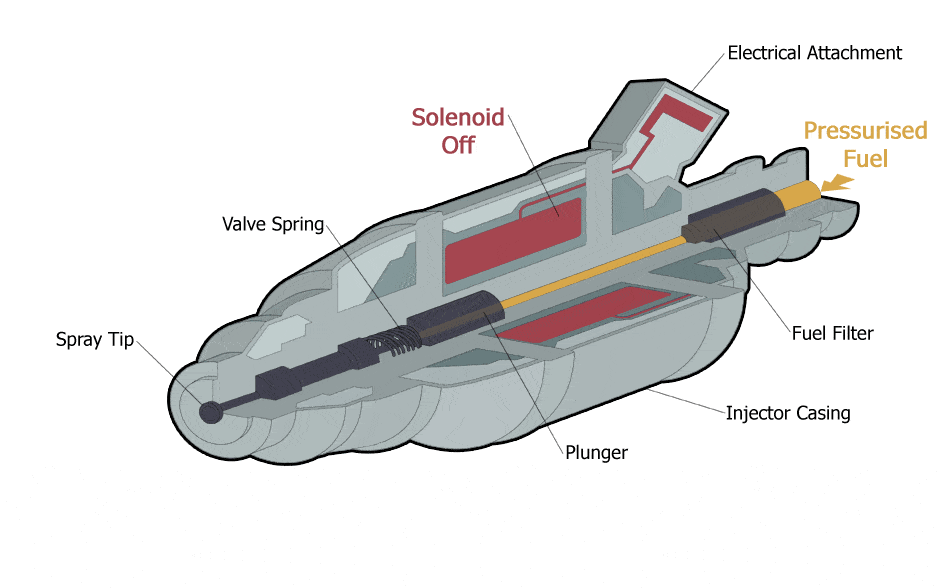
When open, the fuel injector sprays high-pressure fuel in a finely atomized spray which is conducive for vigorous combustion with the air, when the spark plug fires. The car’s ECU reads the composition of the air and adjusts to supply the optimal amount of fuel via the fuel system, which is then supplied to each cylinder via its dedicated fuel injector.
A bad or clogged fuel injector can’t meet the ECU’s demand, which causes an imbalance in the fuel/air mixture.
9 Bad or Clogged Fuel Injector Symptoms to Determine If Cleaning is Needed
The common symptoms of a bad fuel injector can start mildly at first as poor fuel consumption or a rough idle. As time goes on more serious symptoms such as the engine being down on power or a dancing RPM needle become more pronounced.
Often bad fuel injectors will manifest multiple symptoms such as:
1. Poor Fuel Consumption

Poor fuel consumption is one of the earliest signs of bad fuel injectors. This is usually due to the ECU attempting to compensate to maintain the correct fuel/air mixture by simply demanding more fuel be delivered by the injector to the cylinder.
2. A Rough Idle
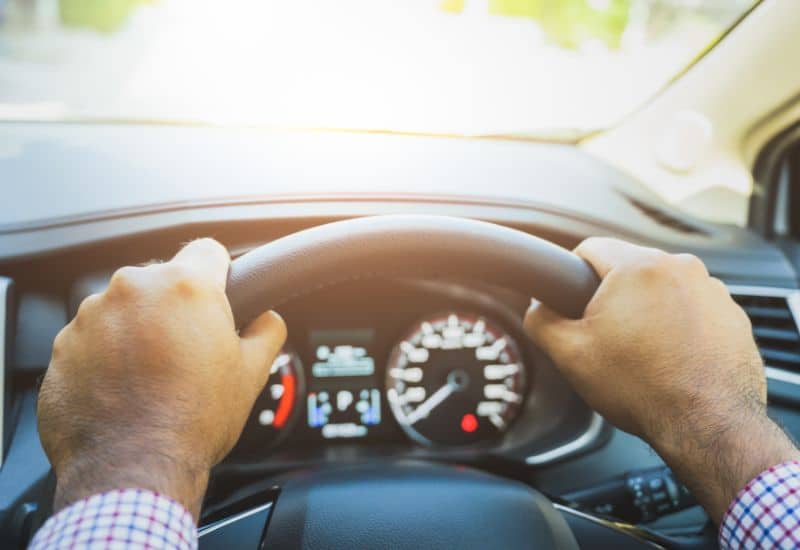
A rough idle is also a common sign of bad fuel injectors, as there isn’t enough fuel to meet the air mixture when you aren’t stepping on the accelerator. Early on the rough idle caused by bad fuel injectors will smooth out when you start driving, as the ECU will actively demand more fuel be delivered to the cylinders when you press on the accelerator pedal.
3. Bad Fuel Odors

Bad fuel injectors can sometimes cause bad fuel odors in the cab air or from the exhaust system. This can be due to a fuel injector where the solenoid is stuck open, or from excess unburned fuel migrating out of the engine.
4. The Engine Is Down On Power Or Frequently Stalling

Bad fuel injectors that are clogged with fuel deposits can cause the engine to feel down on power or to the point that the car starts stalling.
Sometimes the solenoid might be opening and closing on command, but there simply isn’t enough free space in the injector itself to release the necessary volume of fuel. Other times you have one or more fuel injectors where the solenoid starts to stick closed affecting the internal combustion process and the cycle of the engine.
5. The RPM Needle Starts to Dance
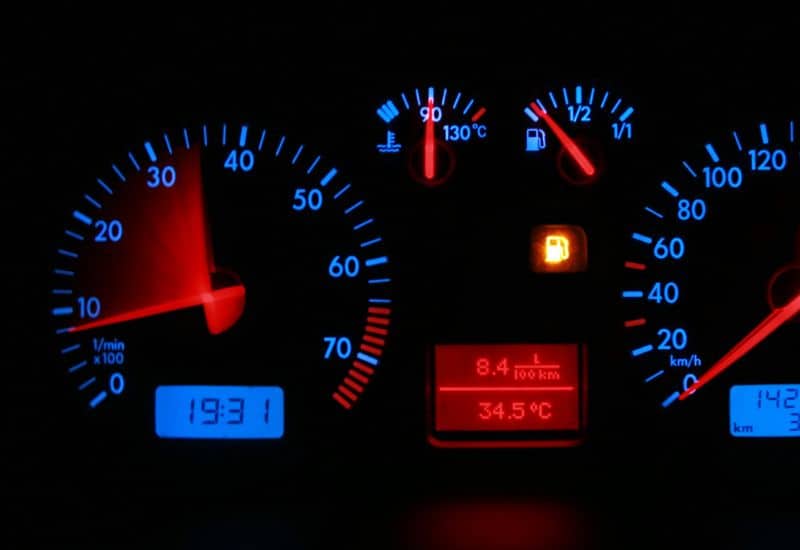
Bad fuel injectors can cause the engine to start surging randomly. This is a problem that is even more likely to occur when you’re accelerating as the ECU struggles to accurately compensate for the fuel demand. Left unchecked the needle will start to dance more frequently, and you’ll likely notice other serious symptoms of bad fuel injectors.
6. The Engine Starts Misfiring

Engine misfires are a severe symptom of bad fuel injectors. This is often due to the injectors not supplying the proper volume of fuel to support problem combustion. Unburned fuel can then move into the exhaust system causing extensive damage.
A lot of cars will flash the check engine light during the misfire event or leave the check engine light on. If the car is misfiring due to bad fuel injectors, you need to stop driving as soon as possible. Even if the check engine light flashes and goes off again, the problem is still likely to occur.
7. Foul Smelling Exhaust and/or Failed Emissions Test
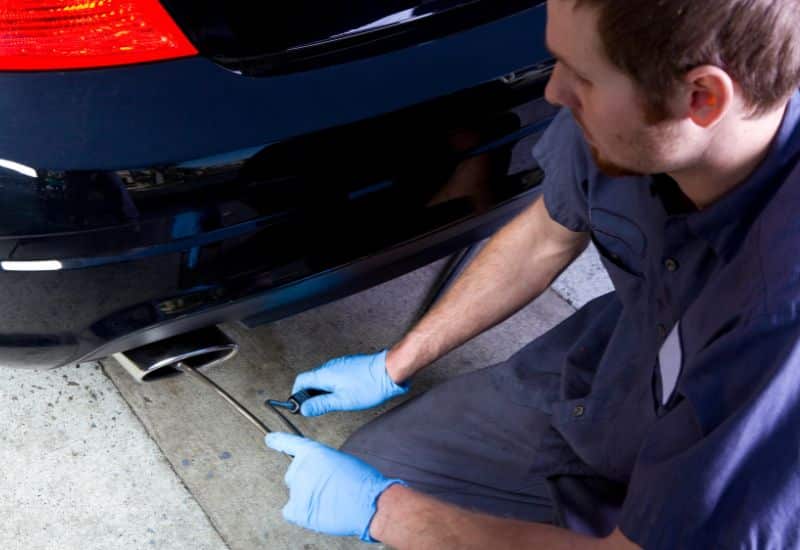
Foul-smelling exhaust from clogged fuel injectors typically occurs when you have unburned fuel from the cylinders finding its way down into the exhaust system. Even if you don’t immediately notice the odor, the car won’t be able to pass any mandatory emission tests.
The danger here is that the fuel entering the exhaust system can damage the catalytic converter or other exhaust system components. This can add thousands of dollars on top of the cost of fixing the bad fuel injectors.
8. A Fuel Leak From car’s exhaust system
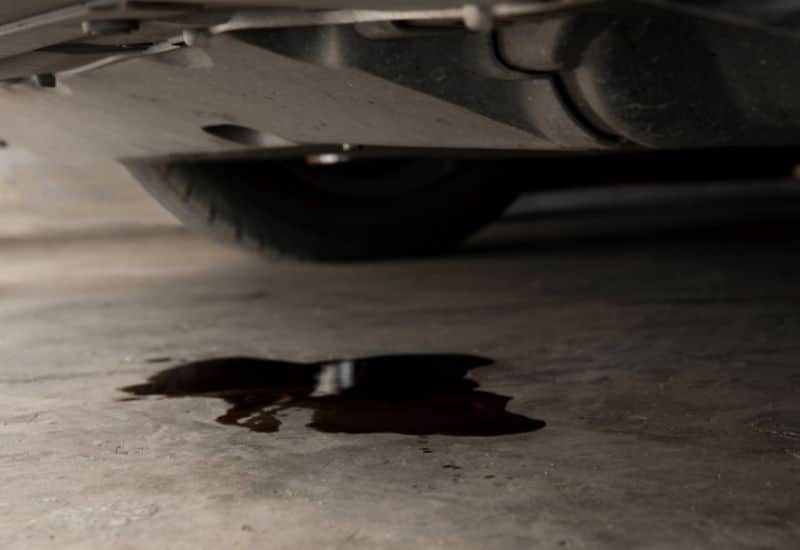
Sometimes badly clogged fuel injectors can leave behind fuel leaks on parking spots and pavement. This sometimes looks like a rainbow streak left behind after you drive away. Especially if the pavement is wet.
When this happens, you likely have a bad hose or a leak in the fuel rail caused by a severely clogged fuel injector. This is another time when the car isn’t safe to drive. Especially if that fuel leak is dripping down on hot sections of the car’s exhaust system.
9. The Check Engine Light Comes On
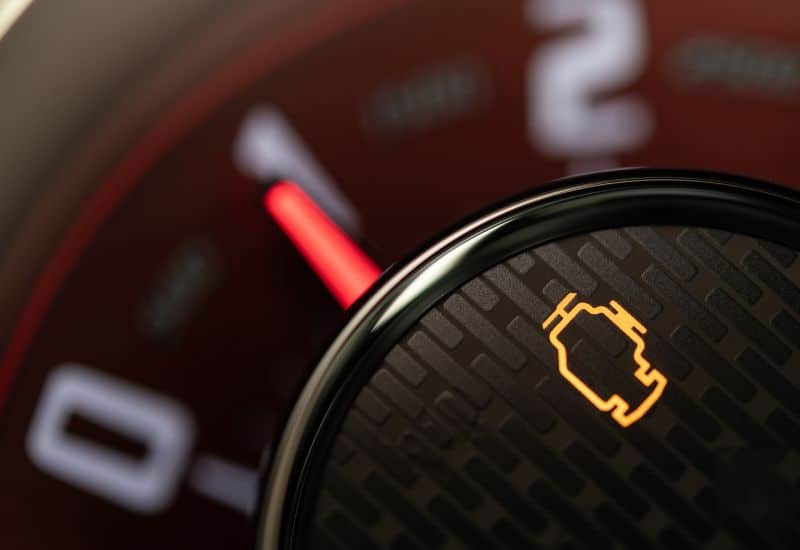
The car’s check engine light can flash or come on due to bad fuel injectors causing other performance issues with the engine or exhaust system. Even if the light flashes during an event like a stall or a misfire and then doesn’t come back on again, you should still suspect that there’s a serious issue afoot.
The good news here is that anytime a check engine light comes on, the car’s ECU is going to throw a code. You can then hook it up to an OBD II code reader to help pinpoint which fuel injectors have a problem and/or any other issues that might be contributing to other performance issues you’ve noticed.
Common Codes Indicating Bad Fuel Injector Problems
The most common codes for a bad fuel injector are P0171 and P0174, which indicate the engine controller is seeing a lean or rich condition.
Code P0201, P0202, P0203, P0204, P0205, P0206 and P0207, and P0208 will indicate a cylinder misfire. The last number is telling you which cylinder is having a problem, and you can inspect that fuel injector.
How Much Does It Cost to Clean Clogged Fuel Injectors?
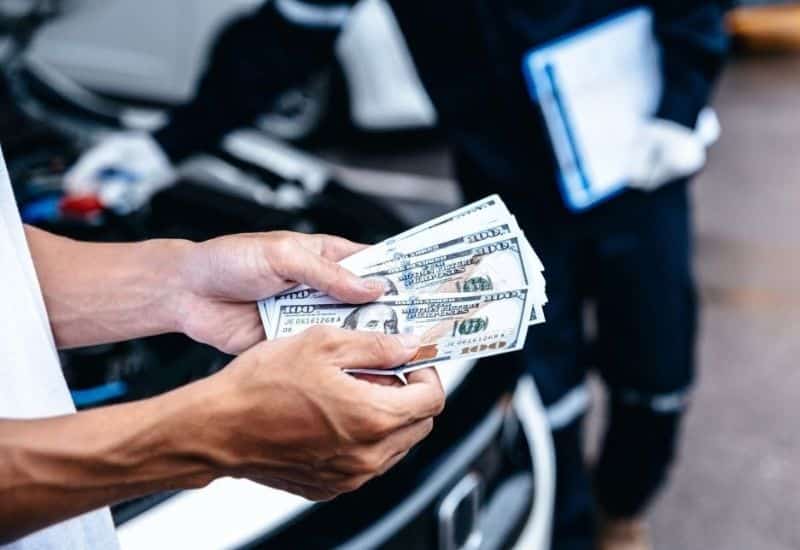
The cost to have a mechanic clean partially clogged fuel injectors ranges from around $75 to $125. Though with the right tools and a little know-how you might be able to clean your own clogged fuel injectors for under $20. Though the special tool kit you’ll need can cost between $35 to $125.
Best Fuel Injector Cleaning Kits
The following are some of the best DIY fuel injector cleaning kits for a home mechanic. They will get the job done, without the exorbitant expense that a professional mechanic might sink into a professional-grade fuel injector cleaning machine.
Fuel Injector Cleaning: A Step-by-Step Guide for DIYers
A DIY fuel injector cleaning kit is something you might want to turn to for testing and cleaning clogged fuel injectors. Once you’ve sourced a kit, you can clean your own fuel injectors using the following steps.
How Often Should You Clean Your Fuel Injectors?
You should clean your fuel injectors every 45,000 to 50,000 miles, which for some vehicles is roughly every two fuel filter changes. It’s also about halfway to when you’ll need a full tune-up on the engine around 100,000 miles.
If you’re mechanically inclined, you can clean your own fuel injectors with an injector cleaning kit and cleaning spray.
How Much Does Professional Fuel Injector Cleaning Cost?
Professional fuel injector cleaning might be needed for bad fuel injectors or injectors that have become so clogged that a DIY kit can’t get the solenoid to operate correctly. While the cost can vary based on your mechanic’s hourly rate, you can expect to pay around $120 to $250 to professionally clean all your fuel injectors.
Though this is generally not a service you’ll find at one of those rapid service stations where you can get your oil and fuel filter changed. Professional fuel injector cleaning usually needs to be done by a mechanic, a dealership, or a full-service auto center.
The Cost to Replace Bad Fuel Injectors
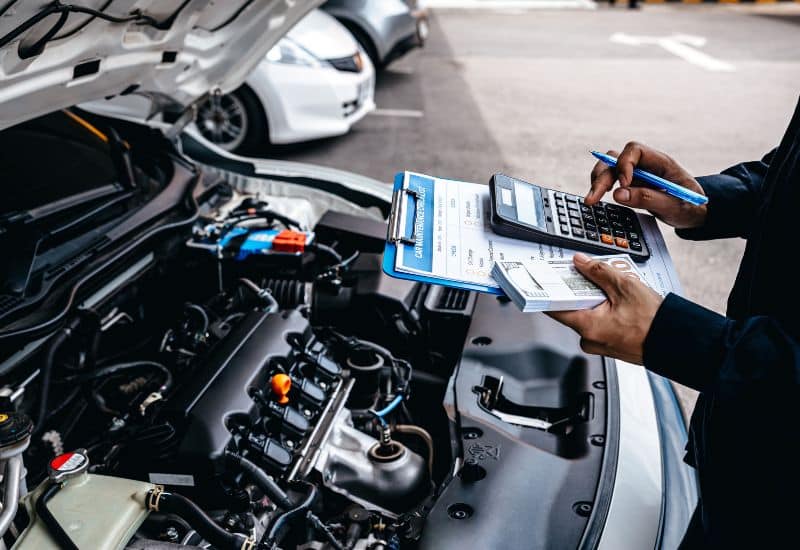
The cost to replace bad fuel injectors can range from as little as $350 to as much as $900 depending on the number of cylinders your car has and the mechanic’s hourly rate. The more cylinders that need to be replaced the higher the parts and labor costs are going to run.
If you ran on bad fuel injectors to the point that it caused leaks in the fuel rail, misfires, or problems with the car’s exhaust system, it can compound the final cost. Any one of these issues could drive the cost to replace bad fuel injectors by hundreds if not a thousand dollars or more. This is why it’s wise to not procrastinate symptoms of bad fuel injectors.
Can I Replace My Own Fuel Injectors?
Replacing your own fuel injectors is something that only an accomplished home auto mechanic should ever attempt. Most of the time, the wisest course of action is to have a professional handle the job.
A Step-by-Step Guide to Replacing Your Car’s Fuel Injectors
If you are an avid do-it-yourself mechanic and have all the right tools, you can replace your fuel injectors via the following steps.
Frequently Asked Questions
Where Is the Fuel Injector Located?
The fuel injectors are located along the fuel rail in the car’s engine, as part of the intake manifold. You’ll see one associated with every cylinder as it delivers the high-pressure spray needed to maintain a proper fuel/air mixture.
Should I Add Fuel Injector Cleaner to My Car’s Gas Tank?
Fuel injector cleaner is a common fuel additive to consider adding to your car’s gas tank every 2,000 to 3,000 miles. It helps break down and remove residual deposits in your fuel system, including your fuel injectors.
All you have to do is pour a bottle into your tank when it’s around a quarter full. Then fill up your tank with premium fuel. While it won’t 100% prevent your car from ever getting clogged fuel injectors, it will go a long way toward optimizing the high-pressure fuel conditions and smooth solenoid movement inside the fuel injectors in between regular maintenance sessions.
Some of the best fuel injector-cleaning fuel additives
Can Bad Fuel Injectors Damage My Car?
Bad fuel injectors can cause modest engine damage that can lead up to some serious consequences over time. Though the two biggest threats are misfires and fuel leaks inside the engine bay.
When fuel leaks from a bad fuel injector fall on hot components of the exhaust system, there is a real risk of a fire in the engine bay. At the same time, bad fuel injectors cause misfires, which can damage both the pistons and cylinders inside the engine, while also causing severe damage to your car’s exhaust system.
Conclusion
Symptoms of bad fuel injectors typically start out as a rough idle, poor MPG, and faint fuel odors. As time goes on a car with bad fuel injectors is more prone to stalling out, misfiring, and a dancing RPM needle.
If your car shows symptoms of bad fuel injectors and a check engine light turns on, you can confirm the problem by hooking it up to a code reader. If it throws a code like P0171 and P0174, for a lean or rich condition. Code P0201, P0202, P0203, P0204, P0205, P0206, P0207, thru P0208 indicate which cylinder is having a problem.
If you suspect or know that your car has bad fuel injectors, you might be able to clean them yourself with a DIY injector cleaner kit. This is something that needs to be done every 45,000 to 50,000 miles. If it’s beyond what you think you can do yourself, a professional mechanic can usually clean clogged fuel injectors for around $150.

Written By
Jason Farrell
Jason Farrell is a certified master technician, the editor of Mechanic’s Diary in Pittsburgh, Pennsylvania. He is ASE (Automotive Service Excellence) certified and earned a Bachelor’s Degree in Automotive Technology from Pittsburg State University. With nearly 18 prior years of experience in the automotive field, he has extensive knowledge about Domestic, European, and other foreign makes and models of cars and light trucks. Jason’s experience working as a technician and service manager at dealerships, gave him the experience and know-how of most aspects of inspection, diagnosis, and repair from engine and drivability to electrical, HVAC, brakes, steering and suspension and everything in between.

